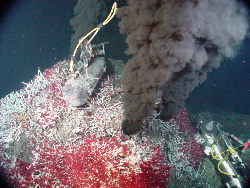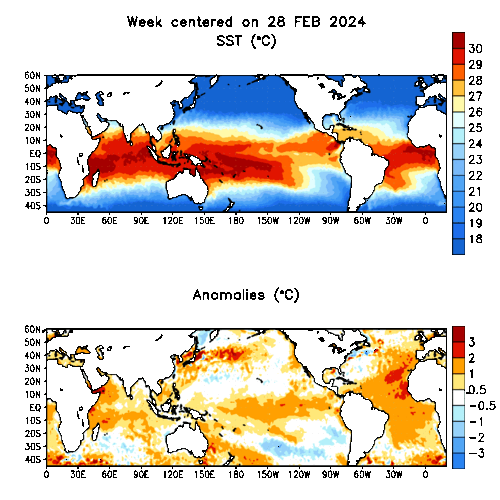OldBlackDog
Well-Known Member

[h=5]RESEARCH GROUPS[/h]
 <boldgrouphead style="font-size: 1.4em; margin: 0.5em 0em; font-weight: bold; color: rgb(82, 117, 170);">Hydrothermal Venting:</boldgrouphead>
<boldgrouphead style="font-size: 1.4em; margin: 0.5em 0em; font-weight: bold; color: rgb(82, 117, 170);">Hydrothermal Venting:</boldgrouphead>
Fluids | Gases | Plumes | Particles | Models <boldgrouphead style="font-size: 1.4em; margin: 0.5em 0em; font-weight: bold; color: rgb(82, 117, 170);">Submarine Volcanism:</boldgrouphead>
<boldgrouphead style="font-size: 1.4em; margin: 0.5em 0em; font-weight: bold; color: rgb(82, 117, 170);">Submarine Volcanism:</boldgrouphead>
Geology and Mapping <boldgrouphead style="font-size: 1.4em; margin: 0.5em 0em; font-weight: bold; color: rgb(82, 117, 170);">Ecosystems:</boldgrouphead>
<boldgrouphead style="font-size: 1.4em; margin: 0.5em 0em; font-weight: bold; color: rgb(82, 117, 170);">Ecosystems:</boldgrouphead>
Ocean Acidification | Pharmacology
[h=5]RESEARCH THEMES[/h]
- <boldgrouphead style="font-size: 1.4em; margin: 0.5em 0em; font-weight: bold; color: rgb(82, 117, 170);">Time-series Studies</boldgrouphead>

Axial Seamount - <boldgrouphead style="font-size: 1.4em; margin: 0.5em 0em; font-weight: bold; color: rgb(82, 117, 170);">Global Exploration</boldgrouphead>

Mariana | Lau | Kermadec | Explorer Ring of Fire - <boldgrouphead style="font-size: 1.4em; margin: 0.5em 0em; font-weight: bold; color: rgb(82, 117, 170);">Ocean Acidification </boldgrouphead>

High CO[SUB]2[/SUB] Natural Laboratories
[h=5]RESEARCH SITES:[/h]
Click map to go to Expeditions.
[h=5]SEARCH[/h]<form accept-charset="UTF-8" action="http://search.usa.gov/search" id="search_form" method="get">
<label for="query">Search EOI:</label> <input autocomplete="off" class="usagov-search-autocomplete" id="query" name="query" type="text"><input name="commit" type="submit" value="Search"></form>
The NOAA/PMEL Vents Program has re-organized into two separate focused programs:
Earth-Ocean Interactions and Acoustics.
[h=2]
 Earth-Ocean Interactions[/h][h=4]Mission:[/h]Discovering, measuring, understanding, and predicting ecological impacts of natural chemical, biological, and geological processes between the solid Earth and Ocean.
Earth-Ocean Interactions[/h][h=4]Mission:[/h]Discovering, measuring, understanding, and predicting ecological impacts of natural chemical, biological, and geological processes between the solid Earth and Ocean.The Earth-Ocean Interactions Program contributes to NOAA’s objective of achieving a holistic understanding of marine ecosystems by exploration and research on hydrothermal vents, their impacts on the global ocean, and their unique chemosynthetic biological communities. This includes ecosystem characterization, resource assessment, environmental observation, and technology development.
[h=3]Recent Highlights:[/h]
A 30-year history of the NOAA Vents program was published in Oceanography. In 1983, a small team of NOAA PMEL scientists, later joined by colleagues at Oregon State University (CIMRS) and the University of Washington (JISAO), exploited new seafloor and water column mapping technologies to understand the impact of hydrothermal systems on ocean chemistry and seafloor ecosystems.
In 2013, the program was restructured into two new programs continuing the Vents legacy while focusing directly on NOAA strategic goals in ocean processes and ecosystems.
Read more
 Submarine Ring of Fire 2014-Ironman expedition:
Submarine Ring of Fire 2014-Ironman expedition:Continued exploration in the western Pacific brought EOI scientists back to the Mariana Arc and Back-arc at the end of 2014. Using ROV Jason and CTD casts, scientists discovered that Daikoku seamount was found to be erupting for the first time, but NW Rota seamount was no longer active. Other highlights included a return to NW Eifuku and its Champagne vent field where a huge community of mussels live in a high-CO[SUB]2[/SUB] environment. All the discoveries can be viewed at the Ocean Explorer SRoF14 cruise website.
Read more
 Axial Seamount Eruption Forecast
Axial Seamount Eruption ForecastAn eruption is forecast to occur at Axial Seamount by the end of 2015, based on measurements of uplift of the seafloor in the summit caldera since the 2011 eruption. Axial Seamount is the most active submarine volcano in the NE Pacific and the site of the new OOI/RSN cabled observatory. Follow the eruption forecast on our new Axial Blog.
Read more
Visit: News archives
WebmasterDOC / NOAA/ OAR / PMEL / Earth-Ocean Interactions Program
Disclaimer | Privacy PolicySeattle: 7600 Sand Point Way NE, Building 3, Seattle WA 98115-6349
Newport: 2115 SE Oregon State University Dr., Newport OR 97365


